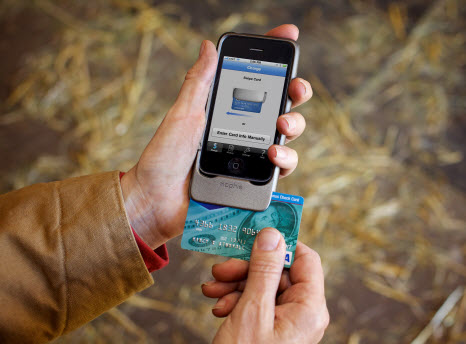The new Intuit: rethinking financial software for challenging economy, fast-moving technology

Now that the dust has settled from the season of overindulgence, the goals for a new year are kicking in. For many folks - and businesses alike - the first call to action is to get the finances in order. And for many, that means tracking the dollars and cents in a piece of financial software.
As 2010 was coming to a close, I sat down with Intuit founder Scott Cook to chat about the mindset of a company whose products - Quicken, Quickbooks, TurboTax, Mint and others - are some of the biggest and most widely recognized names in personal and business financial software. Specifically, though, I was interested in knowing how Intuit was adapting its strategies to face two big challenges: the high-speed pace of technology changes and a turbulent economy that affected everyone from individuals to large companies.
After all, helping customers "manage their books" has been Intuit's claim to fame over the years. But that's not enough anymore - and the execs at Intuit know it. The world moves in real time and money changes hands faster than ever - with the click of a button, the swipe of a card or even the tap of a smartphone from the back of a cab.
Today, that means there's an approach to technology today that's different from just a few years ago, Cook said. The company has shifted away from a top-down way of thinking and instead is committed to letting the folks on the front lines - the ones who are working directly with customers - do more tinkering and experimenting.
"You've got to let them run their experiments," Cook said. "We're freeing people to innovate... to give them the free time to work on the next invention."
A mobile app, for example, isn't enough. Consider GoPayment, a multi-platform app designed for mobile workers such as plumbers or electricians that allows them to process credit card payments remotely. As breakthrough as that technology was for some industries, Intuit took it a step further by partnering with a company called Mophie to bring actual credit card swiping to the iPhone.
It's all part of Intuit's push to shift its focus. No longer does that company want to focus on what was - that is, to help a customer track what's already been done. Instead, the company wants to look forward, to use that data to offer scenarios of what the future might bring and how to use that information to help customers save time and put more money in their pockets.
"It's somewhat of a right turn for us," he said about the shift. But he stressed that changes couldn't just be a directive from the top, that it would involve getting everyone - from developers to executives - on-board with a new approach. One way to do that was to take folks out of their comfort zones with new approaches, such as the company's "reverse trade show" event.
The event put the executives in the "booths" and allowed the company's team of "innovators" to roam the floor and listen as the execs tried to pitch their projects and persuade the innovators to come and work on them. It was a far cry from the days when a developer might have an idea on how to improve a product and then try to get the attention of a project manager for consideration.
At the end of the day, though, the goal is still to give customers what they need - even if they don't know they need it - so they can work through the sometimes painful financial tasks, such as filing an income tax return.
Sure, Turbo Tax has been around for years - but that doesn't mean that it's reaching every potential customer. Older, established taxpayers - business owners, stock traders, homeowners and even parents - might need a powerful piece of software that can handle the cumbersome details of their financial year. But what about the 20-something who has no dependents or no deductions and can get away with filing a simple 1040-EZ form?
A year ago, the company introduced SnapTax for Turbo Tax, an iPhone app that allows users to snap a picture of their W-2 forms, answer a few questions, file electronically and track the status of their refunds.
"We want to target that younger group, the ones with the simple tax return," Cook said. "They're a try-it-and-see-if-it-works audience... If we exceed their expectations, they love it. If we don't exceed, they won't tell their friends."
For a company that relies largely on word-of-mouth marketing, it's not enough to do the job right. The bigger challenge is doing it better than anyone ever expected.